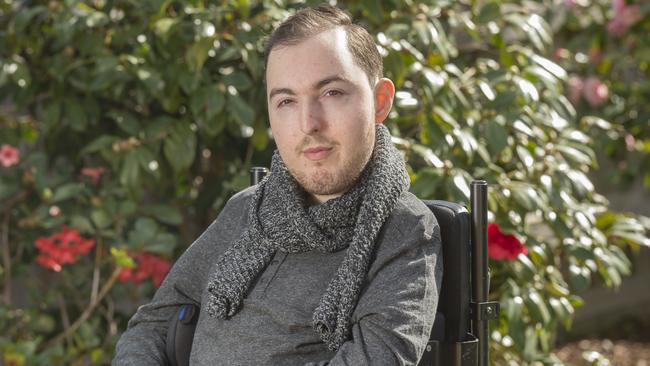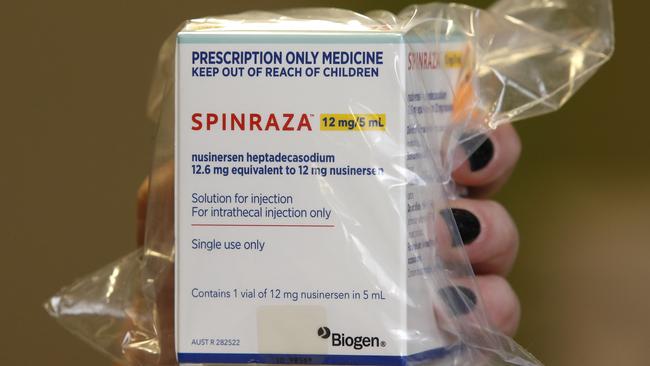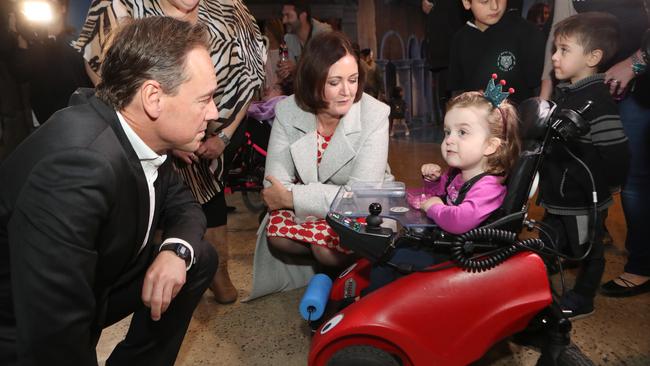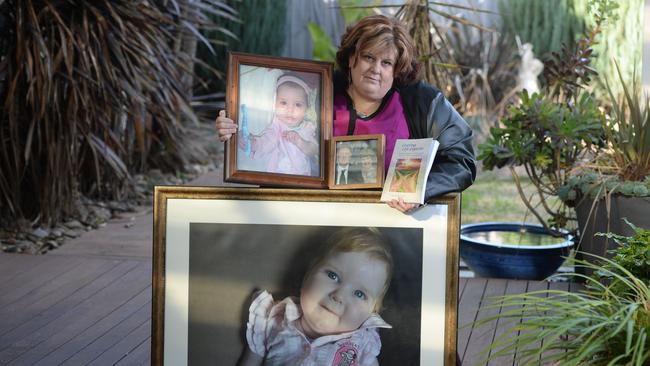Life-changing drug Spinraza for spinal muscular atrophy patients costing adults at least $500,000
A life-changing drug that could see some adults walking for the first time since they were toddlers is cruelly out of reach.
North West
Don't miss out on the headlines from North West. Followed categories will be added to My News.
ADULTS suffering from a muscle-wasting condition are having to pay $500,000 to access a lifesaving drug, while others are paying just $160.
In a cruel twist of legislation, a life changing drug for patients suffering from the genetic disease spinal muscular atrophy, or SMA, is out of reach for an unknown number of adults.
SMA is a genetic degenerative disease that causes muscle wasting and affects the motor neurons that control movement.
Patients are born with a deleted or mutated gene on their fifth chromosome that inhibits the ability to produce enough SMN protein — essential for the survival of motor neurons. Without motor neurons, the body’s muscles cannot receive signals from the brain, which leads to progressive muscle weakness and wasting.
DRUG THAT HELPS SPINAL MUSCULAR ATROPHY PUT PBS
SHOT OF HOPE FOR STEPHANIE NAVE AS CHILDREN GET MUSCLE-WASTE TREATMENT UNDER PBS
It is the largest genetic cause of death in infant children and patients with type 1 SMA usually live for nine months. It eventually deprives patients with type 2 and 3 of any kind of independence, significantly affecting respiratory functions and increases the chances of dying from infections such as pneumonia.
Essendon resident Chris Kessaris, 25, suffers from type 2 SMA and was confined to a wheelchair shortly after prep.
The Kessaris family have been looking for an answer to the disease for 25 years, and two years ago it came.

The drug Nusinersen, better known as Spinraza, was developed by United States biotechnology company Biogen in 2016.
Spinraza works by helping a different gene produce the vital protein that maintains motor neurons.
In May this year, health minister Greg Hunt announced Spinraza would be included on the Pharmaceutical Benefits Scheme.
But largely due to cost, the Pharmaceutical Benefits Committee decided the drug would be available for type 1, 2, and 3 patients aged 18 years and under for $40 an injection, concession patients paying just $6.40.

For Mr Kessaris, and all other patients over 18 years, the cost remains $125,000 per injection with four injections needed in the first year, and two every year after that.
When he heard the news on television, Mr Kessaris fell into a deep depression.
While the news was wonderful for many parents and children, the dreams of adult patients such as Mr Kessaris, of one day standing up, of getting dressed without assistance, of being able to drink a beer with friends in a pub without help, were shattered.
“I couldn’t really communicate or function for the next few days. I was quite depressed. I waited 25 years,” Mr Kessaris said.

“I would hope [Spinraza] would give me a lot more independence. Things like lifting my arms above my head, brushing my teeth, combing my hair,” Mr Kessaris said.
In a statement, Biogen Australia and New Zealand managing director Chris Stemple said while there was “very clear clinical trial data” on the effectiveness of Spinraza on children, more robust data was required in the adult population of patients before it could be available to everyone.
ONE IN FIVE AUSTRALIANS CARRY THE SMA GENE
SMA Australia chief executive Julie Cini lost two children to the disease and has since dedicated her life to helping people and families affected by SMA.
One in 35 Australians carry the recessive SMA gene. Recessive genetic diseases do not cause symptoms in the people who carry them, and go largely undetected until the birth of a child born with a genetic condition.
Ms Cini and her late husband, who died in an accident, were carriers of the gene, which meant their children had a one in four chance of being born with SMA.

“Both passed away at 10 months and 12 months, it’s unbelievable what I saw. Think about a child that has no muscle, so cannot move, cannot sit, or roll over, or eat. They basically lie lifeless on a bed,” she said.
Signs of SMA usually appear in the first six months of a child’s life and was the main reason the drug was made accessible to younger suffers; so parents could spend longer with their child.
“The kids that are on it (Spinraza) aren’t dying. It’s been here for two-and-a-half years, we’ve only lost one child in that time. Usually we would lose one baby a month.”
She said the government and Biogen used hospital records to find out how many children were in need of Spinraza to evaluate costs.
“But they just don’t know the adult population numbers. Which is one reason they didn’t offer the drug to over 18s,” she said.
Ms Cini said the other reason was a worldwide lack of clinical trials in adult patients.
“Because Spinraza was initially developed for type 1 SMA with the biggest consequence — death — Biogen wanted to work with that patient cohort first,” she said.
Ms Cini is doing all she can to make the drug available to everyone in Australia and is reaching out to SMA organisations around the country to compile her own figures.
“I’m working extremely hard to try to pluck out everyone over 18 to get a population base for the government so they can make a decision. Because it’s such a high price drug it comes down to cost,” she said.
The United Kingdom recently decided not to introduce the drug onto its state-run health service because it was too expensive, even with a discount offered by Biogen.
Ms Cini said she would not stop until all SMA suffers had access to Spinraza.
“The Health Minister definitely knows who I am, they know I’m coming for them,” she said.
SMA Australia is calling on the public to donate on August 30 during the annual SMA 24-hour Challenge to support Australians living with SMA.
To make a donation, visit smaaustralia.org.au


